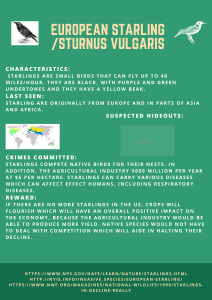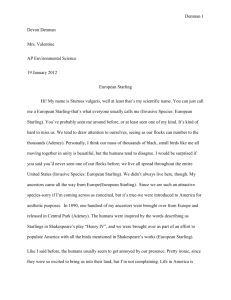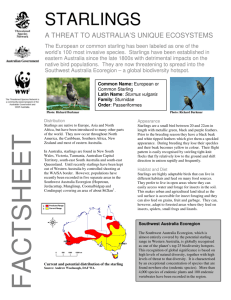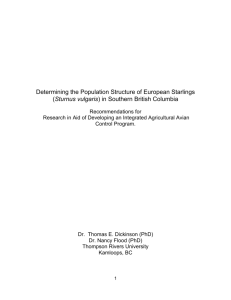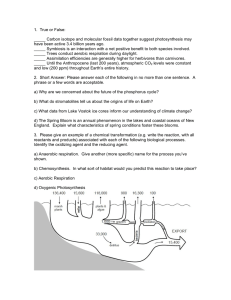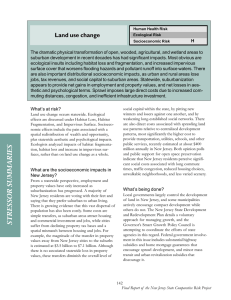Starlings
advertisement
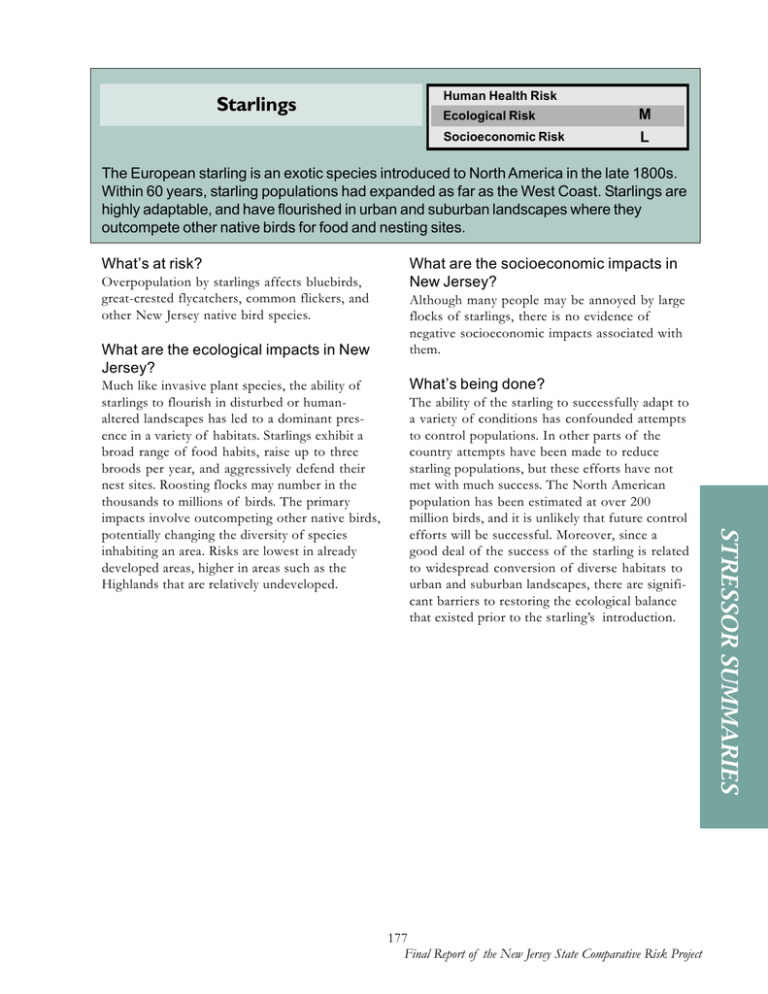
Starlings Human Health Risk Ecological Risk Socioeconomic Risk M L The European starling is an exotic species introduced to North America in the late 1800s. Within 60 years, starling populations had expanded as far as the West Coast. Starlings are highly adaptable, and have flourished in urban and suburban landscapes where they outcompete other native birds for food and nesting sites. What’s at risk? Overpopulation by starlings affects bluebirds, great-crested flycatchers, common flickers, and other New Jersey native bird species. What are the ecological impacts in New Jersey? Although many people may be annoyed by large flocks of starlings, there is no evidence of negative socioeconomic impacts associated with them. What’s being done? The ability of the starling to successfully adapt to a variety of conditions has confounded attempts to control populations. In other parts of the country attempts have been made to reduce starling populations, but these efforts have not met with much success. The North American population has been estimated at over 200 million birds, and it is unlikely that future control efforts will be successful. Moreover, since a good deal of the success of the starling is related to widespread conversion of diverse habitats to urban and suburban landscapes, there are significant barriers to restoring the ecological balance that existed prior to the starling’s introduction. 177 Final Report of the New Jersey State Comparative Risk Project STRESSOR SUMMARIES Much like invasive plant species, the ability of starlings to flourish in disturbed or humanaltered landscapes has led to a dominant presence in a variety of habitats. Starlings exhibit a broad range of food habits, raise up to three broods per year, and aggressively defend their nest sites. Roosting flocks may number in the thousands to millions of birds. The primary impacts involve outcompeting other native birds, potentially changing the diversity of species inhabiting an area. Risks are lowest in already developed areas, higher in areas such as the Highlands that are relatively undeveloped. What are the socioeconomic impacts in New Jersey?
